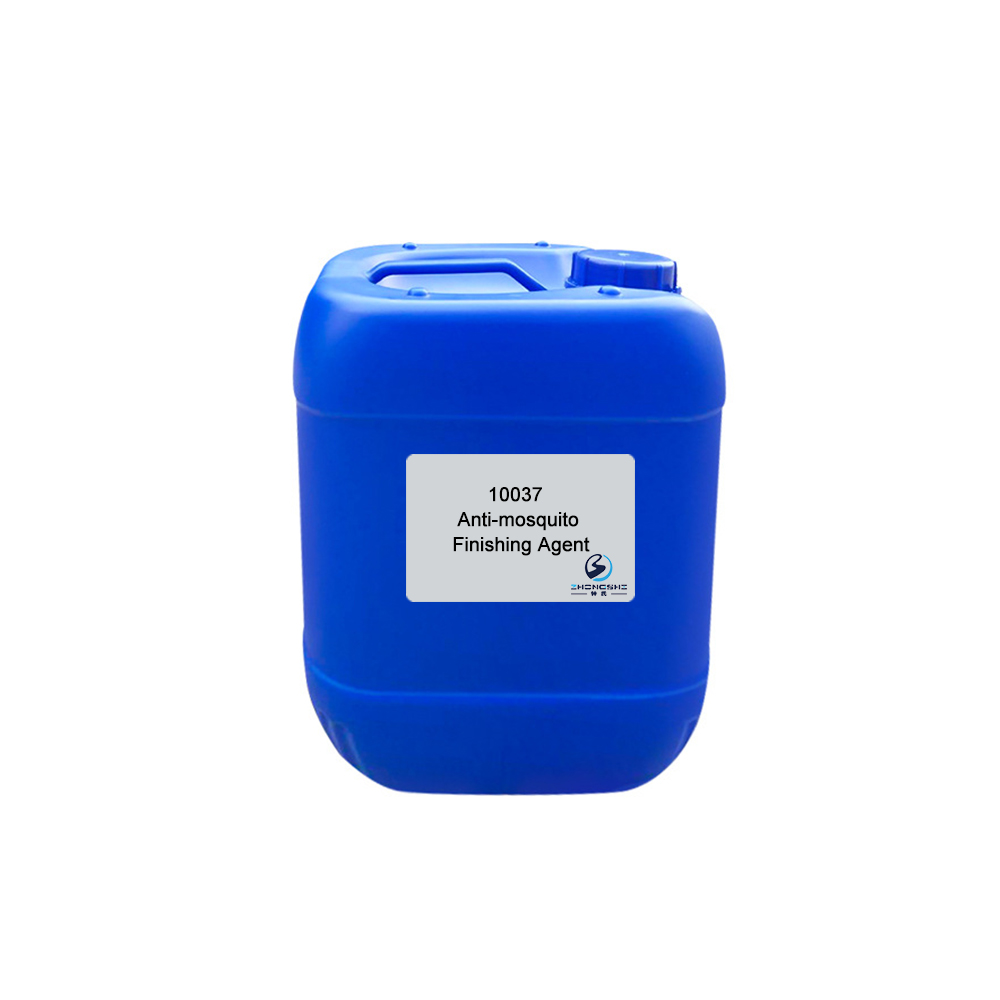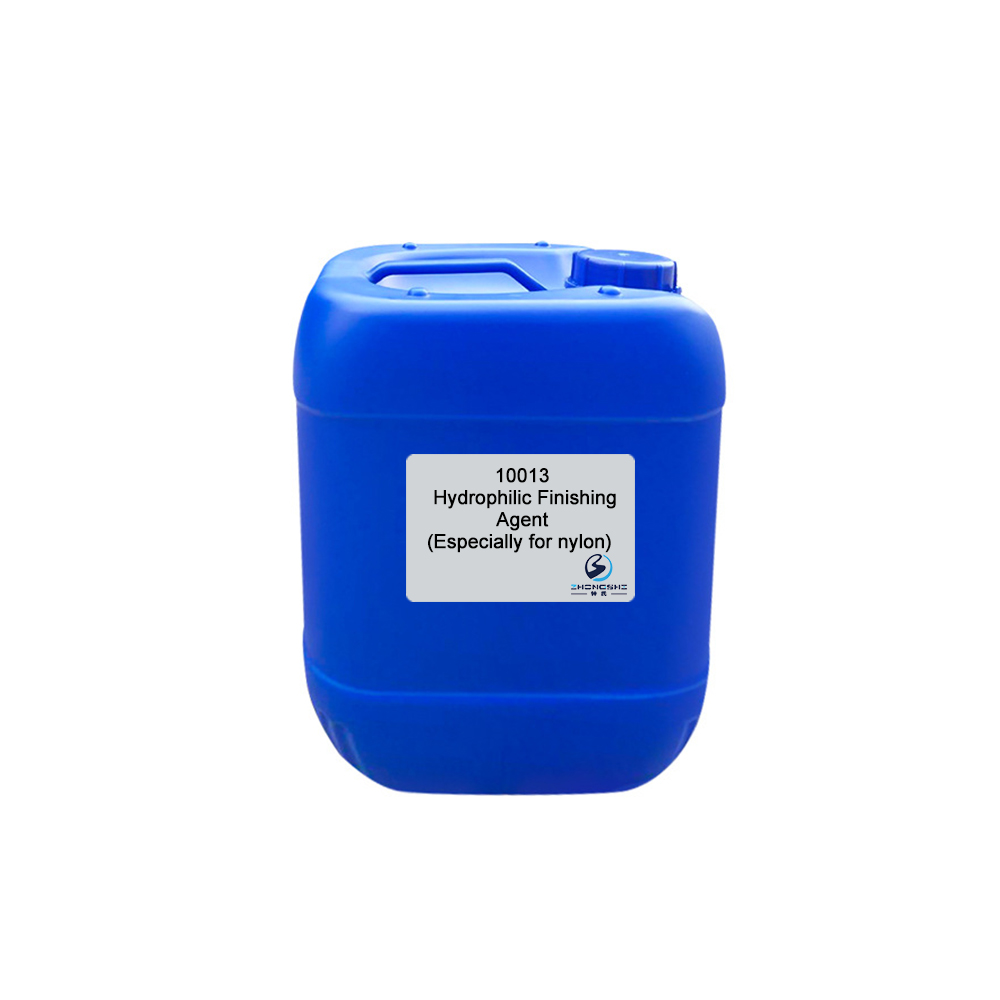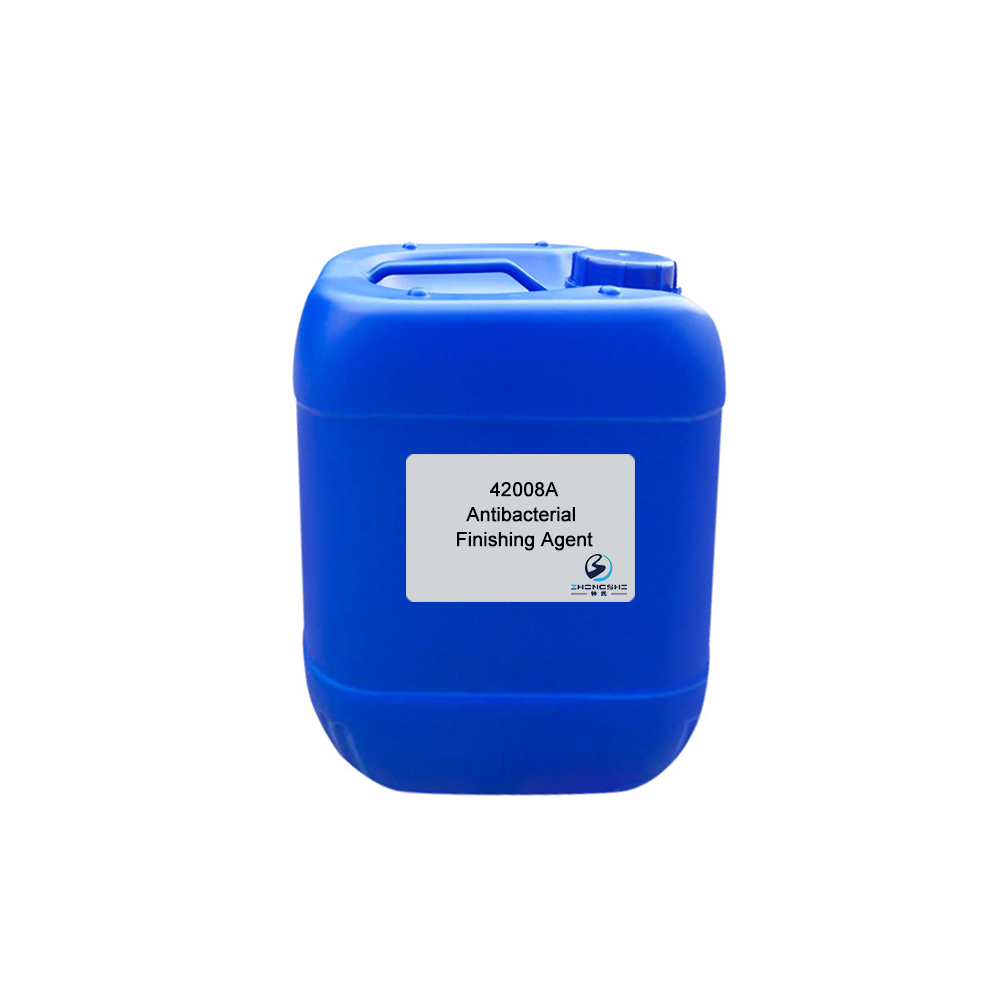18 Years Factory Cotton Whitening Agent - 44133 Anti Phenolic Yellowing Agent – Innovative
18 Years Factory Cotton Whitening Agent - 44133 Anti Phenolic Yellowing Agent – Innovative Detail:
Features & Benefits
- Contains no APEO or formaldehyde, etc. Fits environmental protection requirements.
- Prevents white color or light color nylon fabrics yellowing due to BHT in storage and transportation process.
- Not influence color shade.
- Can be used together with whitening agent in same bath.
- Easy for using.
Typical Properties
| Appearance: | Light yellow liquid |
| Ionicity: | Anionic |
| pH value: | 7.0±1.0 (1% aqueous solution) |
| Solubility: | Soluble in water |
| Content: | 28% |
| Application: | Nylon |
Package
120kg plastic barrel, IBC tank & customized package available for selection
TIPS:
Classification of finishes
The finishing processes may be broadly classified into two groups:
(a) Physical or mechanical
(b) Chemical.
The physical or mechanical processes encompass simple processes like drying on a steam-heated cylinder to various type of calenders, raising for soft effects on the surface of the fabric and breaking the finishing of filled goods for comfortable feel.
Most of the mechanical finishes are known from ancient times and few changes have occurred in their method of operations. Some physical properties, such as dimensional stability, can be improved with chemical finishing.
Mechanical finishing or ‘dry finishing’ uses mainly physical (especially mechanical) means to change fabric properties and usually alters the fabric’s appearance as well. The mechanical finishes include calendering, emerizing, compressive shrink[1]age, raising, brushing and shearing or cropping. The mechanical finishes for wool fabrics are milling, pressing and setting with crabbing and decatising. Mechanical finishing also encompasses thermal processes such as heat setting (i.e., thermal finishing). Mechanical finishing is considered a dry operation even though moisture and chemicals are often needed to successfully process the fabric.
Chemical finishing or ‘wet finishing’ involves the addition of chemicals to textiles to achieve a desired result. In chemical finishing, water is used as the medium for applying the chemicals. Heat is used to drive off the water and to activate the chemicals. The chemical methods have changed with time remarkably, and the newer finishes have been developed continually. Many chemical methods are combined with mechanical methods, such as calendering, to improve the effect. Typically, the appearance of the textile is unchanged after chemical finishing.
Some finishes combine mechanical processes along with the application of chemicals. Some mechanical finishes need an application of chemicals; for example, milling agents are needed for the full process or reductive and fixation agents for shrink proofing wool fabrics. On the other hand, chemical finishing is impossible without mechanical assistance, such as fabric transport and product application. The assignment to mechanical or chemical finishing depends on the circumstance; that is, whether the major component of the fabric’s improvement step is more mechanical or chemical. Mechanical devices are used in both categories; the major distinction between the two is what caused the desired fabric change, the chemical or the machine?
Another method of classification is to classify finishes as temporary and permanent finishes. In fact, no finish stands permanently till the material is serviceable; hence a more accurate classification would be temporary or durable.
Some of the temporary finishes are:
(a) Mechanical: calender, schreinering, embossing, glazing, breaking, stretching, etc.
(b) Filling: starch, china clay and other mineral fillers
(c) Surface application: oil, different softeners and other finishing agents.
Some of the durable finishes are:
(a) Mechanical: compressive shrinkage, milling of wool, raising and cutting processes, perma[1]nent setting, etc.
(b) Deposition: synthetic resins—both internal and external, rubber latex, laminating, etc.
(c) Chemical: mercerisation, perchmentising, cross-linking agents, water repellent finish, fire-resistant and fireproofing finishes, shrink proofing of wool, etc.
It should be noted that any such classification is arbitrary. Accurate classification is difficult because durability depends on several factors. Durability can be varied, and it is not possible to draw any borderline between temporary and durable finishes.
Finishing processes are so varied that it is difficult to classify them. For cot[1]ton, several finishing processes are used widely, but they are so varied in technique that it is difficult to group them together. For many years, the dispersion processes, namely mercerisation and perchmentisation, were the only permanent finishes on cotton, and they still remain of great importance today. The common chemicals used in these finishes are caustic soda and sulphuric acid, respectively, in a moderately concentrated form.
Product detail pictures:

Related Product Guide:
Anti-migration agent can improve the stability of dyeing bath, which is to prevent dyeing defects, as color difference and white core, etc. due to dyes migration. 18 Years Factory Cotton Whitening Agent - 44133 Anti Phenolic Yellowing Agent – Innovative , The product will supply to all over the world, such as: Czech republic, Washington, Portugal, Perfume Microcapsule Finishing Agent ST805 is nonionic and light yellow liquid. It contains natural plant extracts. Perfume Microcapsule Finishing Agent ST805 is suitable for fabrics of various kinds of fibers, as cotton, polyester, nylon and their blends, etc. It can keep lasting and comfortable fragrance, which is washable. It has various kinds of perfume, as lavender, sweet-scented osmanthus, lemon, rose and lily, etc. It has a certain health care function for human body. Perfume Microcapsule Finishing Agent ST805 has good compatibility. It can be used together with silicone oil in same bath without influencing hand feeling of silicone oil.
This company has the idea of "better quality, lower processing costs, prices are more reasonable", so they have competitive product quality and price, that's the main reason we chose to cooperate.







